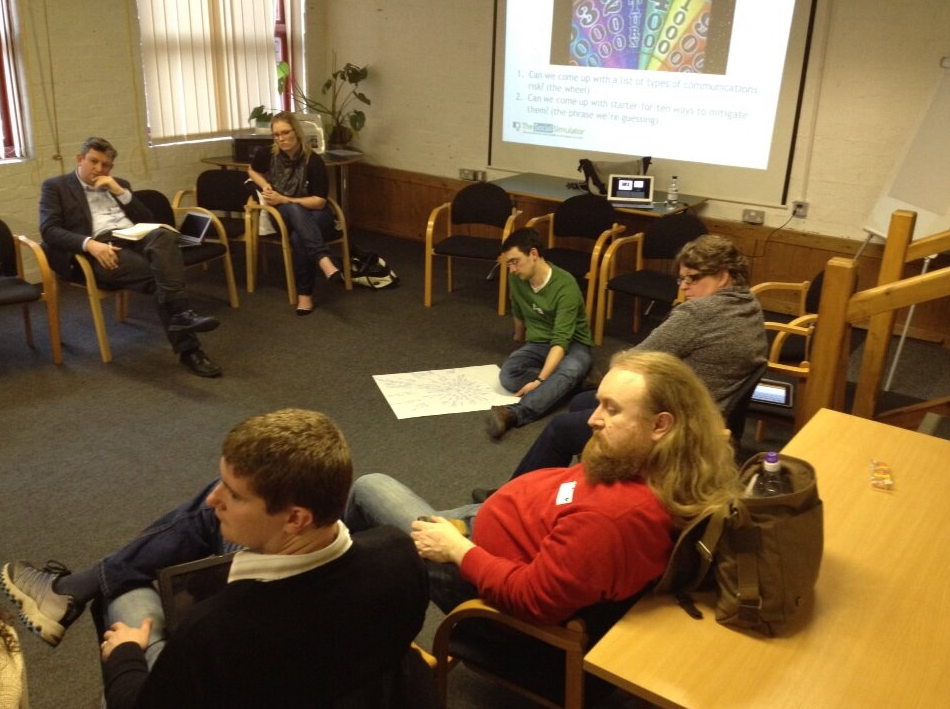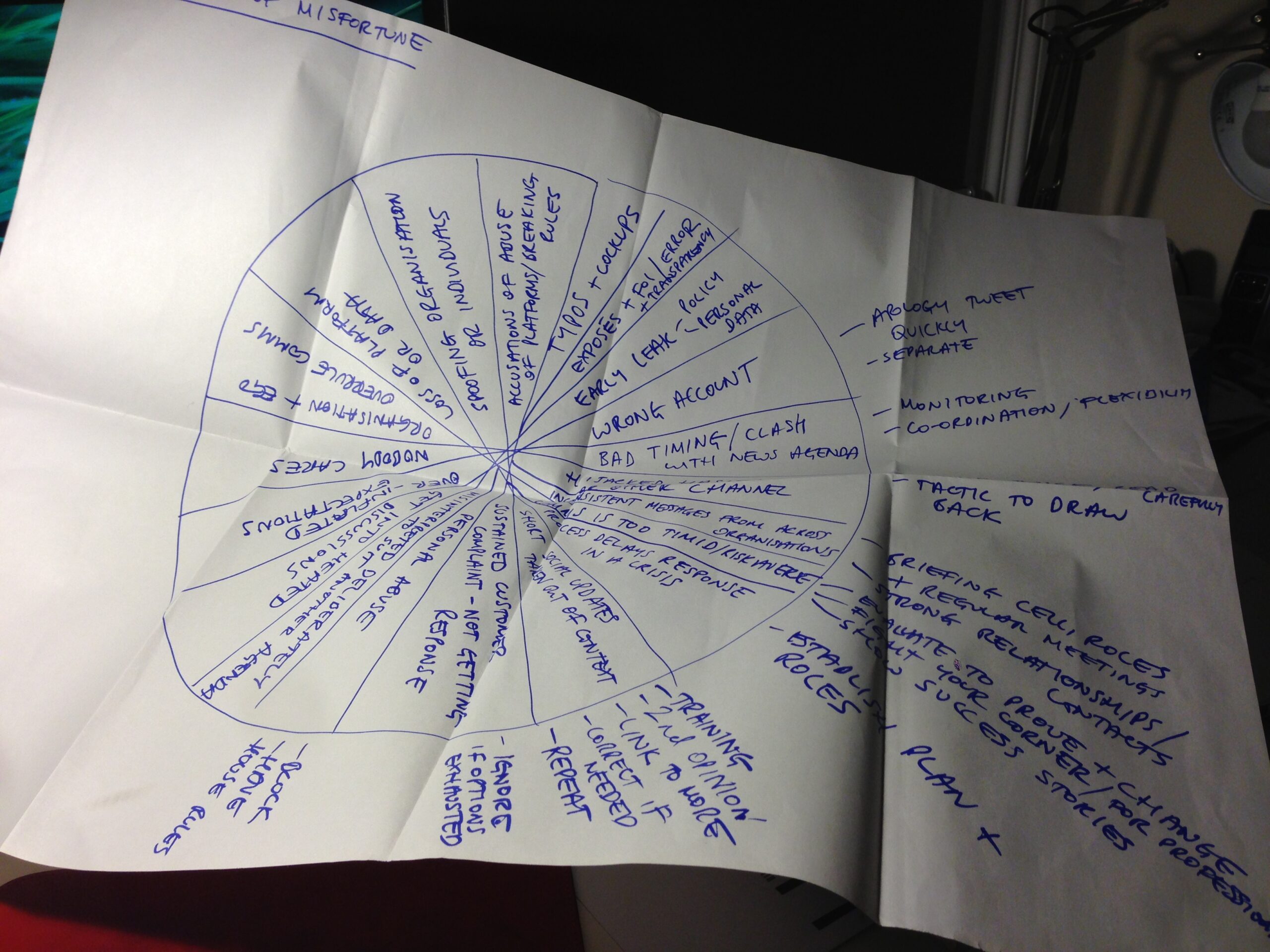I had a great time at CommsCamp in Birmingham last week. Ann, Dan, Darren, Lloyd and helpers did a fantastic job, putting on an event which worked for old hands and those new to unconferences. Every time you think there’s nothing more to talk about, you realise there is (and as always, many of the best bits are the casual chats in hallways and foyers).
Photo credit: Simon Booth-Lucking (I promise, the body language belies a lively discussion…)
I ran a little session with a pretty self-serving goal: to pilot brainstorming a generic ‘Wheel of Misfortune’, or a set of communications risks, that I (or anyone else) might be able to use to help prepare an organisation for hostility in social media.
To me, the purpose of the Wheel of Misfortune is really threefold:
- To make risk assessment for communications something a bit more engaging the normal dreaded grids, and provide the thinking behind formal documents that can demonstrate to bosses and others that you’ve thought through what might go wrong
- Issues Management: to identify some of the potential problem areas or vulnerabilities which, if you handle them well, can help you avert a crisis
- Crisis Management: to identify some of the constraints or dependencies which might cause you problems when you find yourself needing to communicate in a crisis
The basic plan was to divide a circle into about 20 segments, and brainstorm the ‘misfortunes’ recording one in each segment. Then we went round and tried to find some mitigations or solutions to each misfortune (though in the time, we only got about half way round):
About 20 CommsCampers helped me out, and we ended up with the following list of misfortunes:
- Confidential policy info or personal data is leaked
- Something embarrassing is posted from wrong account/inadvertently made public
- Message timing is bad, clashes with news agenda or makes organisation look insensitive/out of touch
- Hashtag or discussion gets hijacked
- People from across the organisation give out inconsistent messages
- Communications get watered down and become ineffective
- Excessive process delays speed of response in a crisis
- Short social updates/messages get taken out of context
- Ongoing customer service issue: sustained customer complaint doesn’t get handled properly
- Organisation faces an exposé/investigative report due to FOI/transparency
- Personal abuse is directed at staff/leaders
- Messages are deliberately misinterpreted to suit someone’s agenda
- Get drawn into heated online discussion
- Audience/internal colleagues have over-inflated expectations
- Nobody cares
- Internal politics and egos overrule communications strategy
- Key platforms or data are lost/shut down
- Organisation or key individuals are spoofed/parodied
- Organisation is accused of abusing platforms/breaking rules
- Someone posts something with an embarrassing typos or makes a miscellaneous cockup
(I particularly enjoyed ‘Nobody cares’, the perennial fear but all-to-frequent reality of public sector communications…)
The mitigations had some sound threads in common (but as I say, we only got half way):
- Have the clarity of process and skills in place to act quickly
- Monitor actively
- Develop strong internal/stakeholder relationships and contacts, in order to co-ordinate activity
- Defend sensible strategic communications, and don’t be swept along by ego or events
- Seek second opinions
- Be prepared to ignore or block abuse
I took the thoughts into a session Ben Proctor and I ran on Friday for the Government Communications Network on Digital Communications for Crises and Emergencies, which was a fascinating day in its own right, highlighting the breadth of crises that public sector communicators deal with, often day-in-day-out.
So many thanks to the CommsCampers who brainstormed, and may the Wheel of Misfortune spin kindly for you all…




Comments
[…] The Wheel of Misfortune – […]